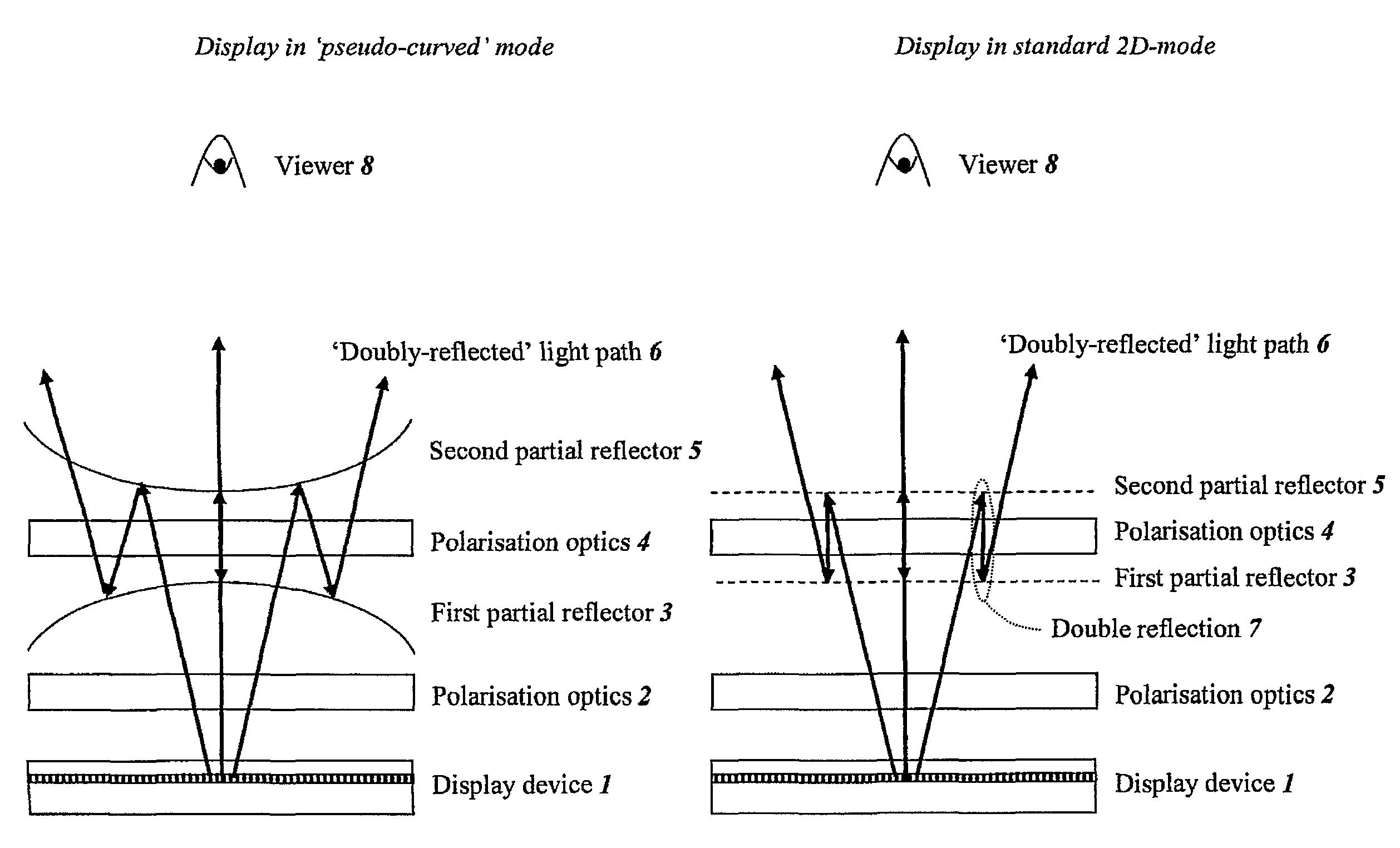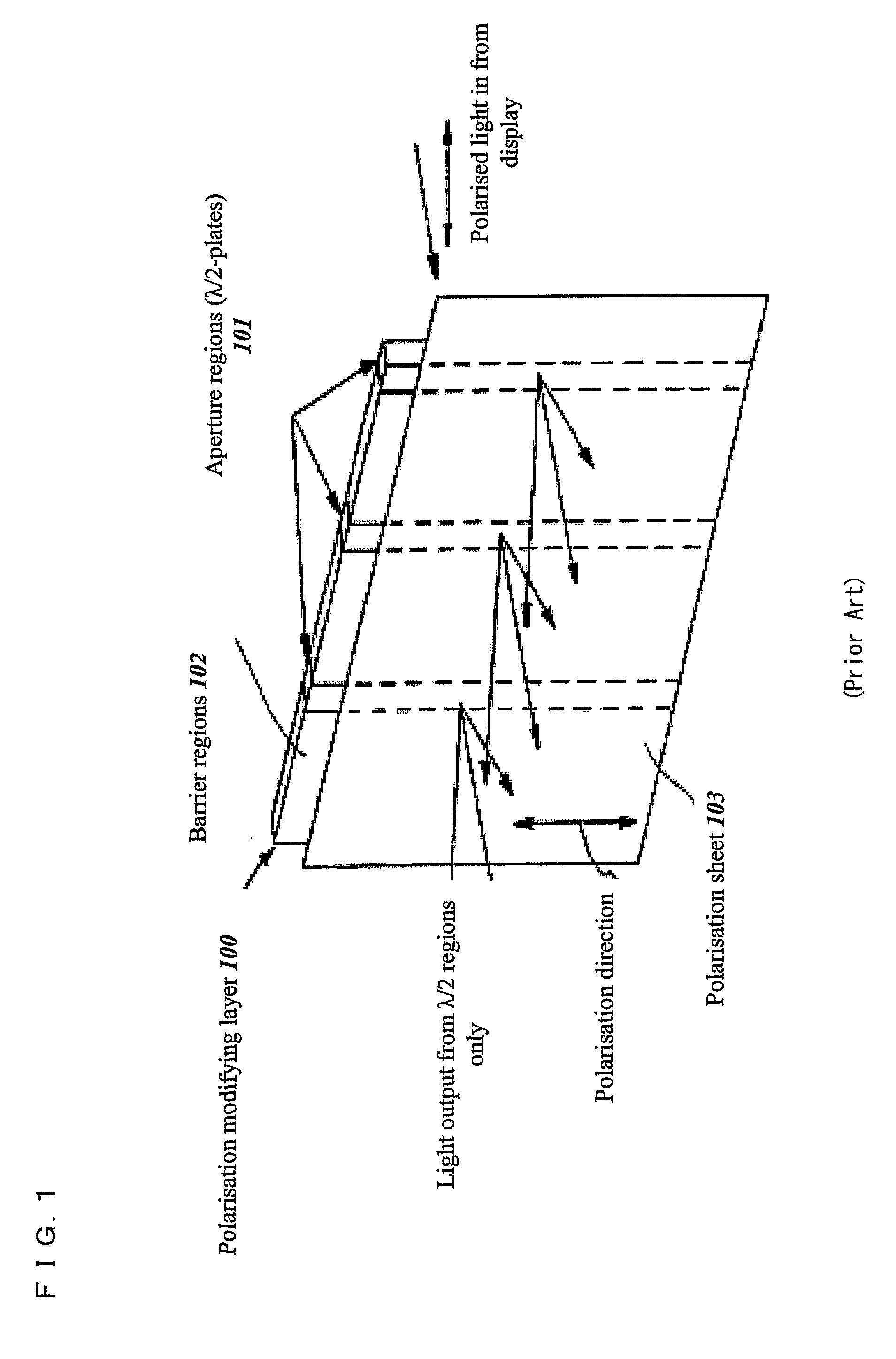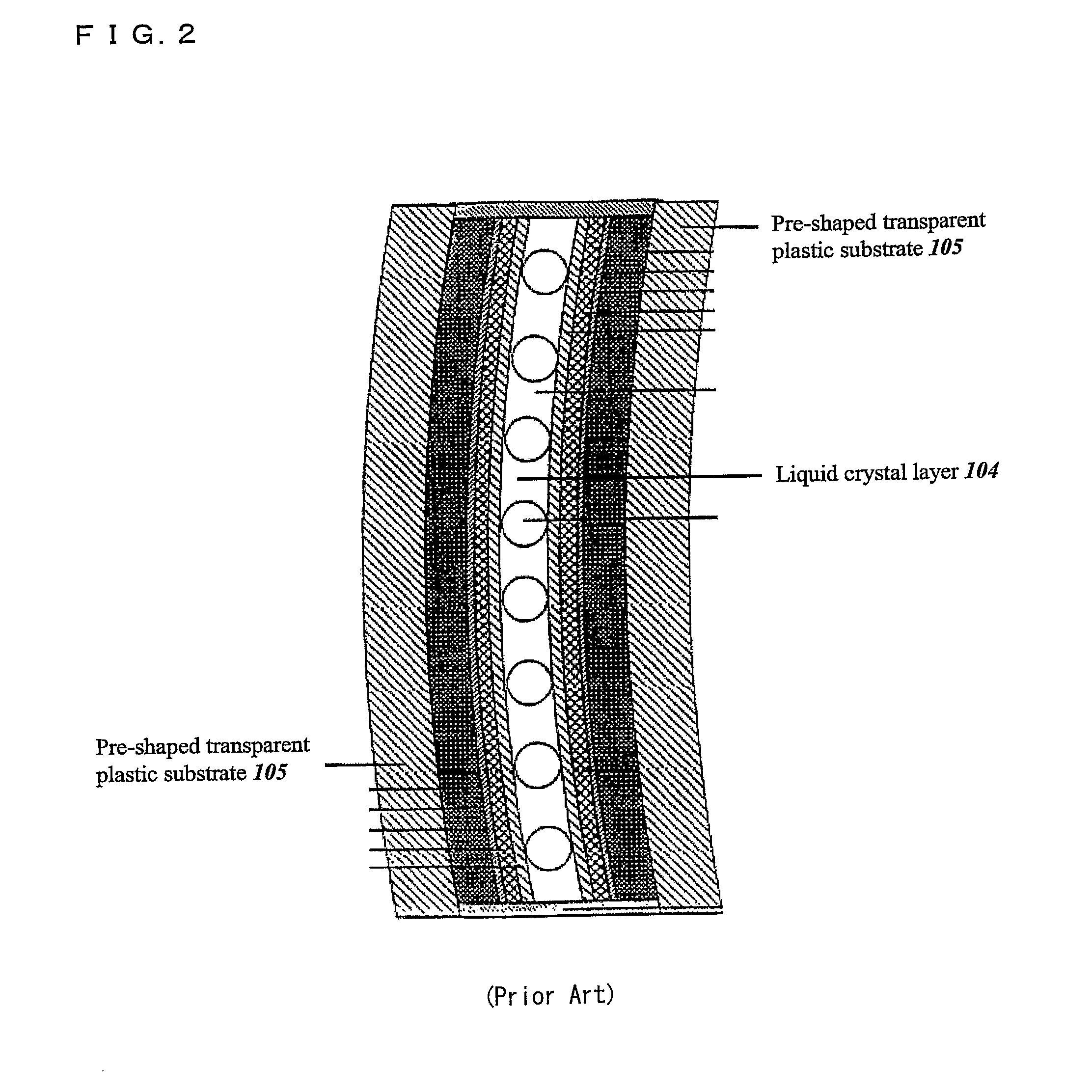Optical system and display
a technology of optical systems and displays, applied in optics, instruments, electrical equipment, etc., can solve the problems of reducing the aesthetics of such displays, and producing images that do not appear flat, and achieve the effect of low cos
- Summary
- Abstract
- Description
- Claims
- Application Information
AI Technical Summary
Benefits of technology
Problems solved by technology
Method used
Image
Examples
first embodiment
[0115]this invention provides the capability of optionally utilising the display device 1 as a standard flat display or as a pseudo-curved display. Switching from one mode to the other, and vice versa, doesn't involve any fundamental change in the optical light path but is done by modifying the shape of at least one of the partial reflectors 3 and 5. This shape modification may be achieved mechanically and will be described in more detail hereinafter for various examples.
[0116]For instance, such switching capability may be of benefit for large-area advertising displays, which may operate like common conventional displays in the 2D-mode when displaying text information or common banners but which may take advantage of an enhanced aesthetic appearance by switching to the pseudo-curved mode when trying to catch the attention of viewers for a particular advertising video. 2D-mode to pseudo-curved mode switching may also be of particular benefit for amusement displays, which may operate ...
second embodiment
[0162]the invention is illustrated in FIGS. 21a and 21b. The only element in this embodiment which is not also described in the previous embodiment is a cholesteric reflector 21. This is a liquid-crystal layer with a natural helical structure which causes it to reflect one circular polarisation state while transmitting the other. Such partial reflectors are well-known and are disclosed in standard books on liquid crystal technology, for example “Liquid Crystal Displays: Addressing Schemes and Electro-optic Effects”, by Ernst Lueder (Wiley-SID Series in Display Technology, 2001). In this embodiment, such a partial reflector is fixed and unswitchable. The liquid crystal layer may have been fixed in place by polymerisation of the liquid crystal molecules themselves or by polymerisation of an accompanying monomer.
[0163]In the display shown in FIGS. 21a and 21b, the first partial reflector comprises a partial mirror 3 whereas the second partial reflector comprises the fixed cholesteric r...
third embodiment
[0171]the invention is shown in FIGS. 23a and 23b and comprises a device which may provide a substantial improvement to the efficiency of light utilisation and hence a substantial increase in the overall brightness of the pseudo-curved appearance display.
[0172]The display described in this embodiment differs from the previously described display in that the optical arrangement in front of the display device 1 comprises two reflective polarisers 22 and 5, between which is disposed a fixed Faraday rotator 23. An entrance linear polariser 9 is disposed below the reflective polariser 22 and an exit linear polariser 12 is disposed above the reflective polariser 5. For example, the transmission axes 15 and 24 of the linear polariser 9 and the reflective polariser 22 are parallel to each other and oriented in the plane of the drawing, whereas the transmission axes 18 and 19 of the reflective polariser 5 and the linear polariser 12 are parallel to each other and oriented at −45° with respec...
PUM
| Property | Measurement | Unit |
|---|---|---|
| angle | aaaaa | aaaaa |
| angle | aaaaa | aaaaa |
| polarisation rotation | aaaaa | aaaaa |
Abstract
Description
Claims
Application Information
 Login to View More
Login to View More - R&D
- Intellectual Property
- Life Sciences
- Materials
- Tech Scout
- Unparalleled Data Quality
- Higher Quality Content
- 60% Fewer Hallucinations
Browse by: Latest US Patents, China's latest patents, Technical Efficacy Thesaurus, Application Domain, Technology Topic, Popular Technical Reports.
© 2025 PatSnap. All rights reserved.Legal|Privacy policy|Modern Slavery Act Transparency Statement|Sitemap|About US| Contact US: help@patsnap.com



